PACS comprises two mutually exclusive sub-instruments:
a bolometric camera planned to perform photometry in three spectral bands (70, 100 and 160 µm) and an integral field unit grating spectrometer operating over the spectral range from 57 to 210 µm with a spectral resolution ranging from 1000 to 5000.
|
The entrance optics creates an image of the telescope secondary mirror on an intermediate pupil position (where the Lyot stop is positioned) and then on the focal plane chopper.
The chopping mirror can flip on the sky (observing, alternately, on-source and on a nearby sky position) or on the two internal calibration sources.
The chopper image is then imaged onto a focal plane, part of which is used by the photometer and the remaining part is used by the spectrometer.
In the photometer, a dichroic beam-splitter, with a transition wavelength of 130 µm, divides the light in a blue and a red channel;
the blue channel offers two filters (60-85 µm and 85-130 µm) while the red channel has a 130-210 µm filter.
In such a configuration, the 160 µm (red) band works simultaneously with one of the two bands at 70 µm (blue) or at 100 µm (green).
The spectrometer is a integral field unit with three consecutive spectroscopic bands
- the first (102-210 µm), the second (72-98 µm) and the third (55-72 µm) diffraction order -
which is able to arrange the 2 dimensional field of view on a Ge:Ga Photoconductor array through an Image Slicer.
For further information, see the section in the Observer Manual.
Back to top
|
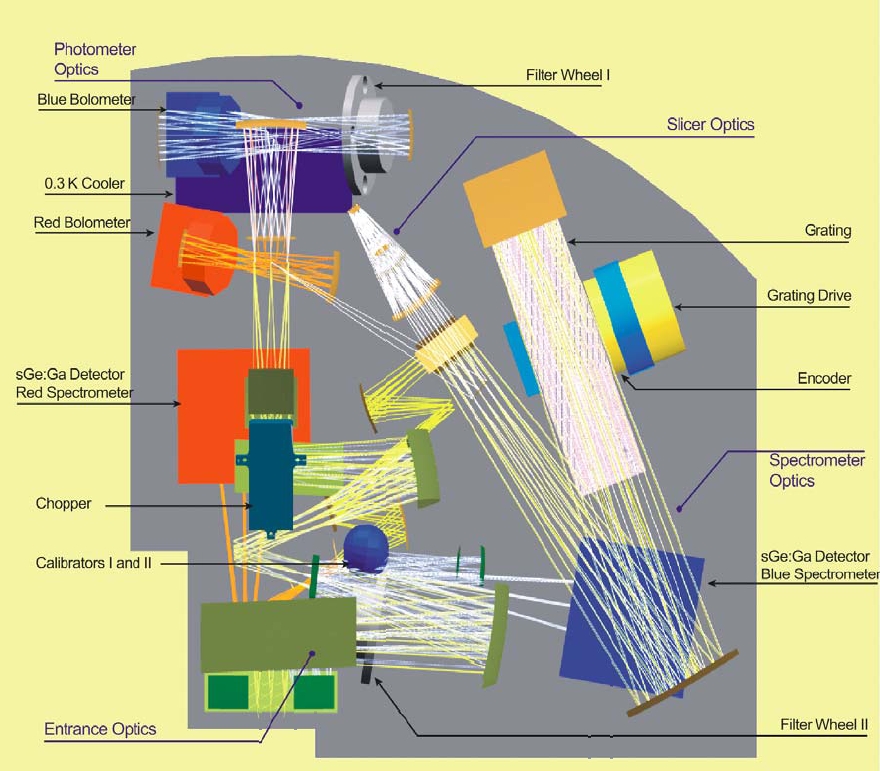
PACS Optical layout.
Click on to see the full size image.
|

Filter trasmission of the PACS photometer system. The vertical dashed lines mark the nominmal filter edges.
Click on to see the full size image.
|
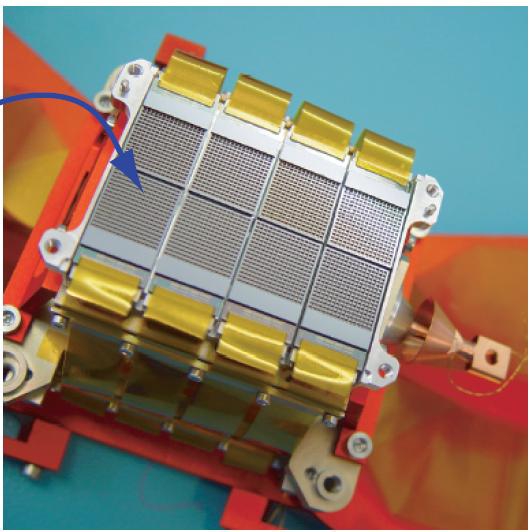
PACS blue bolometer array
PACS observes a field of view of 3'.5 x 1'.75 simultaneously in 2 bands, the first is fixed and centered at 160 µm while the second can be selected either at 70 µm or at 100 µm.
When defining the type of observation, the astronomer has to select one of the two short wavelength bands.
If the observer is interested in all the three bands, he has to prepare, within the same observing proposal, two different observations (so the longer wavelength band will be observed twice).
The transmission curves are available as ASCII tables for the red (160 µm), green (100 µm) and blue (70 µm) bands.
The PACS Camera has two bolometer arrays: a 64x32 pixel bolometer array for the two short wavelengths, arranged on 8 monolithic matrices of 16x16 pixels tiled together,
and a 32x16 pixel bolometer array for the long wavelength, composed of 2 matrices.
Each matrix is separated from another by a distance of about 1 pixel, to be taken into account when planning the maps.
The arrays are mounted on multiplexers which provide a 0.3K temperature at the focal plane and a 3K temperature of the connecter readout electronics.
The dimension in sky of a single pixel is 3.2" and 6.4", for the short and long wavelengths respectively (for comparison, the telescope diffraction figure is 5", 8" 11.5 at 70 µm and 110 µm and 160 µm ,respectively).
For further informetion, see the section in the Observer Manual.
Back to top
|
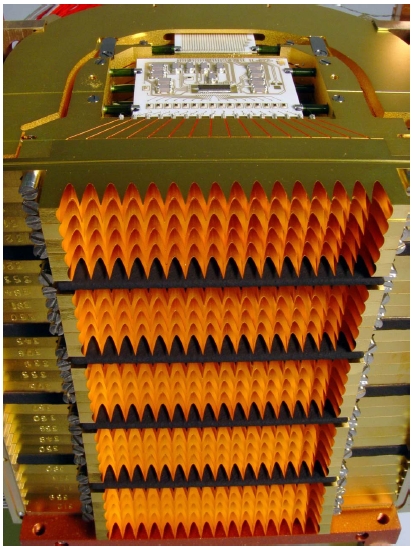
16 (spectral) x 25 (spatial) pixels
Ge:Ga photoconductor array.
The PACS Spectrometer operates in the spectral range from 55 µm to 210 µm with a spectral resolution varying from 940 to 5500, corresponding to velocitys dispersions in the range from 55 to 320 km/s.
The reflection grating operates in the first (102 - 210 µm), the second (72 - 98 µm) and the third (55 - 72 µm) diffraction order.
The spectrometer sensitivity (5 σ, 1 hour) is about 10-18 Wm-2.
PACS spectroscopic mode uses the integral field unit (IFU) technology, which provides simultaneous spectral images of a 47" x 47" field of view, resolved in 5 x 5 pixels, with a spatial resolution of 9.7" x 9.7".
In the PACS IFU spectrograph the image slicer employs reflective optics to re-arrange the two dimensional field-of-view on a 1 x 25 pixels pseudo-slit, which is the entrance for the grating.
Afterwards, the spectrum of the pseudo-slit is imaged on a Ge:Ga photoconductor array with 16 x 25 pixels, on which 16 spectral elements and 25 spatial elements.
For further information, see the section in the Observer Manual.
|
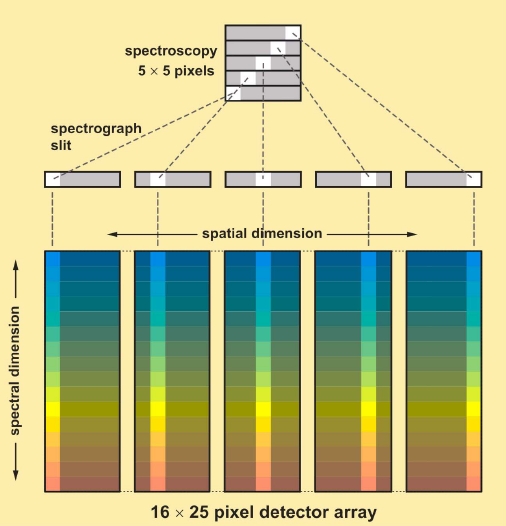
Schematic rapresentation of the PACS integral field spectrograph.
Click on to see the full size image.
|
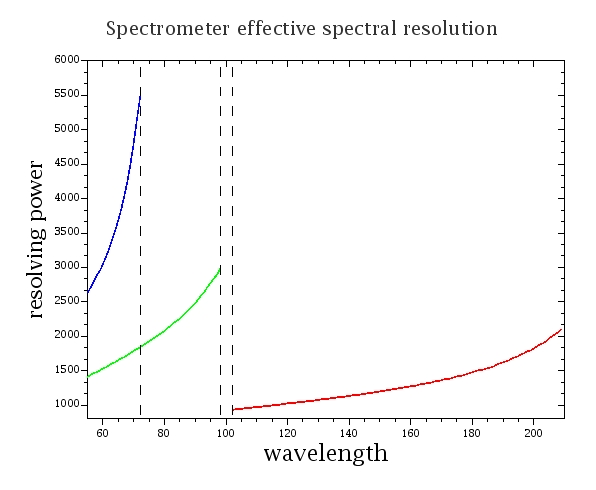
Spectrometer resolution power. The vertical dashed lines mark
the edges between spectral orders.
Click on to see the full size image.
|
|

